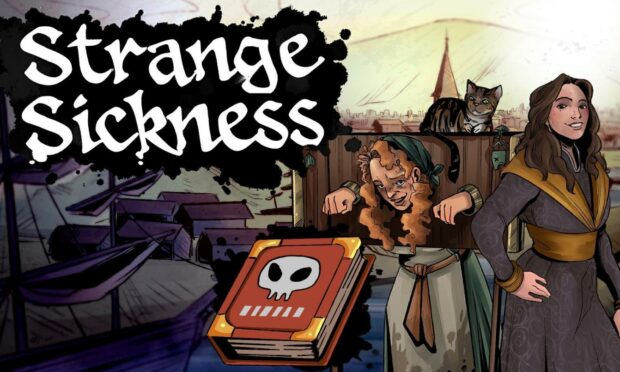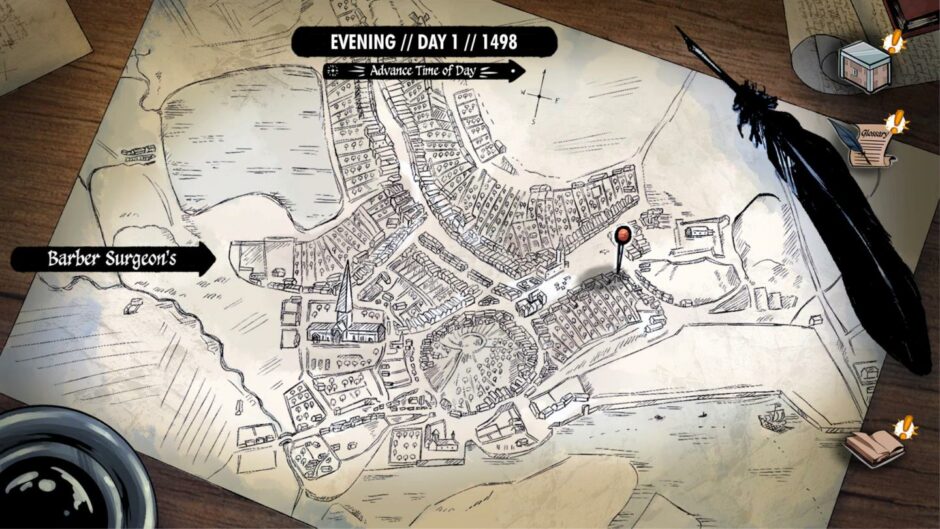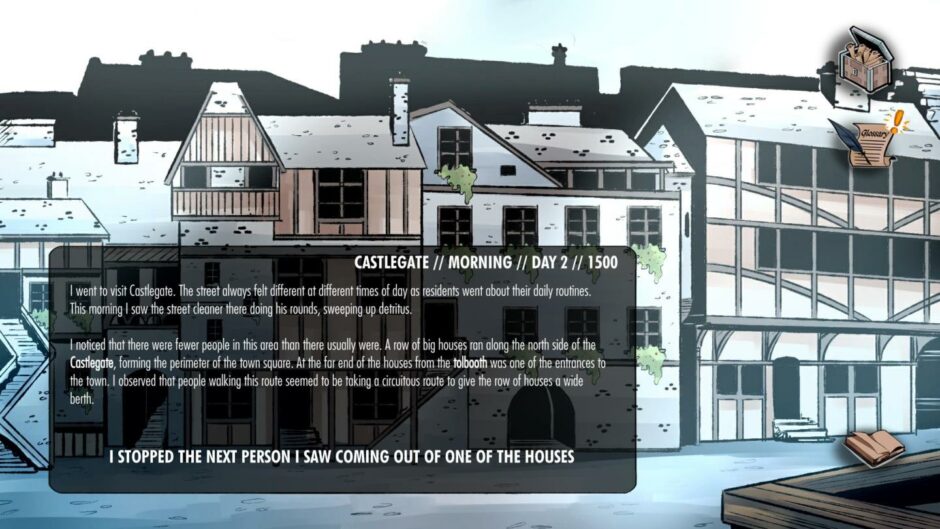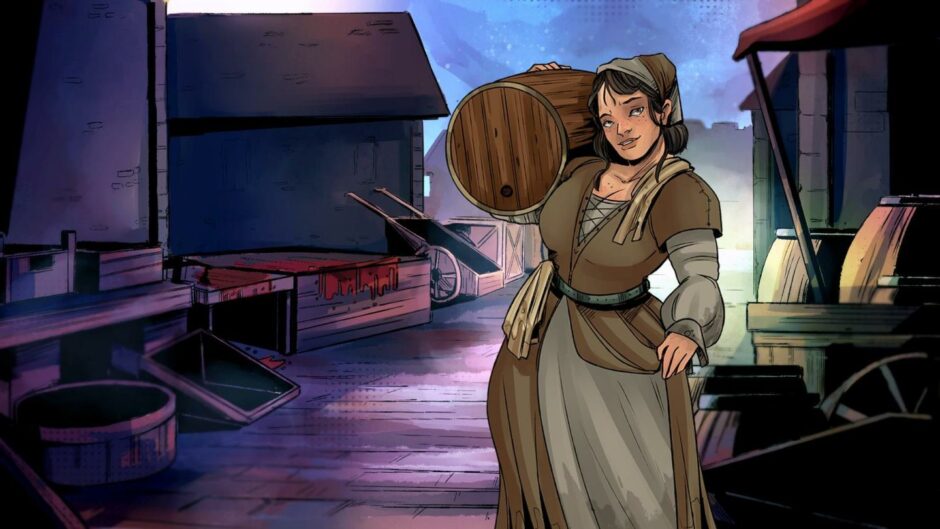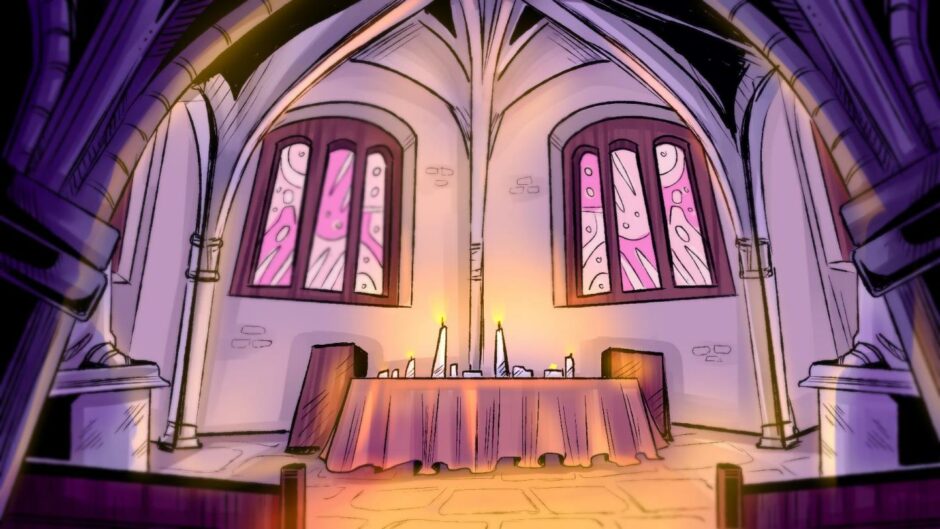A new video game based on research by historians from Aberdeen University shows people what it would have been like to live in the city in the Middle Ages.
The game, called Strange Sickness, is based on events, descriptions and characters recorded in Aberdeen’s Unesco-recognised Burgh Records.
Set in 1498, players will become Robert Collison, a young member of Aberdeen’s Town Council, dealing with the threat of the plague.
Strange Sickness is nine years in the making, with teams from the university scouring through some 5,239 pages of early records to create the storyline.
The final concept and story were written by historian Dr William Hepburn, and the development was funded by a globally-backed Kickstarter campaign.
The game’s mechanics were designed by game developer Katharine Neil and visuals were created by artist Alana Bell.
‘Real people, events and places’
Dr Jackson Armstrong led the Burgh Records research the game is based on. The research was focused on records from between the 14th and 16th centuries.
He explained the reason for turning real events into a game: “Video games are an amazing tool to help people imagine the past and the Burgh Records are an outstanding resource to help us understand life in the Middle Ages.
“We’ve uncovered so much not just about the history of Aberdeen but about how the city interacted with other parts of Scotland and Europe.
“This period of history has a rich tradition in influencing creative writing and media from The Lord of the Rings to A Game of Thrones.
“The Burgh Records provide us with real people, events and places upon which to build a fictional story.”
More than just a game
To help people learn even more about the stories kept in the Burgh Records, a website was created to go along with the game.
The site provides a “historians’ commentary” on Strange Sickness, much like you would get in a director’s commentary in a film.
Dr Armstrong explained how this would enhance the game even further: “As historians, showing how archives and records shaped the game, and the choices we made in using those sources is important to us and we want those who download it to be able to engage further with the characters and events that unfold.
“Much of this is drawn from what is actually contained within the Burgh Records but it is important to understand the intersection between what can be known with certainty and what is imagined based on available information.”
Accessible to all
With Covid still prevalent in Scotland, there are similarities between the Aberdeen in the game and that which exists today.
Profits raised in the first year of game sales will be split equally between the Lord Provost’s Charitable Trust and vaccinaid.org, which aims to deliver Covid vaccines to at-risk communities around the world.
You can purchase and download the game here.
Phil Astley, city archivist, explained how Strange Sickness could make Aberdeen’s history more accessible to all.
He said: “The amazing work that has been undertaken on the city’s records over the past decade means that we now have a much deeper understanding of what life in medieval Aberdeen was like.
“Strange Sickness will help bring this world to an even wider audience – I am really looking forward to playing the game which will be a great way to engage with, and learn more about, this fascinating period.”
‘Creative potential still alive in the Burgh Records’
Though the storyline of Strange Sickness is fictional, it is closely based on the stories of those who lived in Aberdeen back when the plague tormented the city.
Dr Armstrong said the story delves deeper into how society functioned when the records were first written.
He said: “The Burgh Records offer so much in terms of our understanding of gender roles and other social issues during this period and William, Katharine and Alana have used this to build immersive visuals and a great narrative.
“We hope people will enjoy the video game experience and that it can showcase not only life in the Middle Ages but the creative potential still alive in the Burgh Records more than 600 years after they were first created.”
